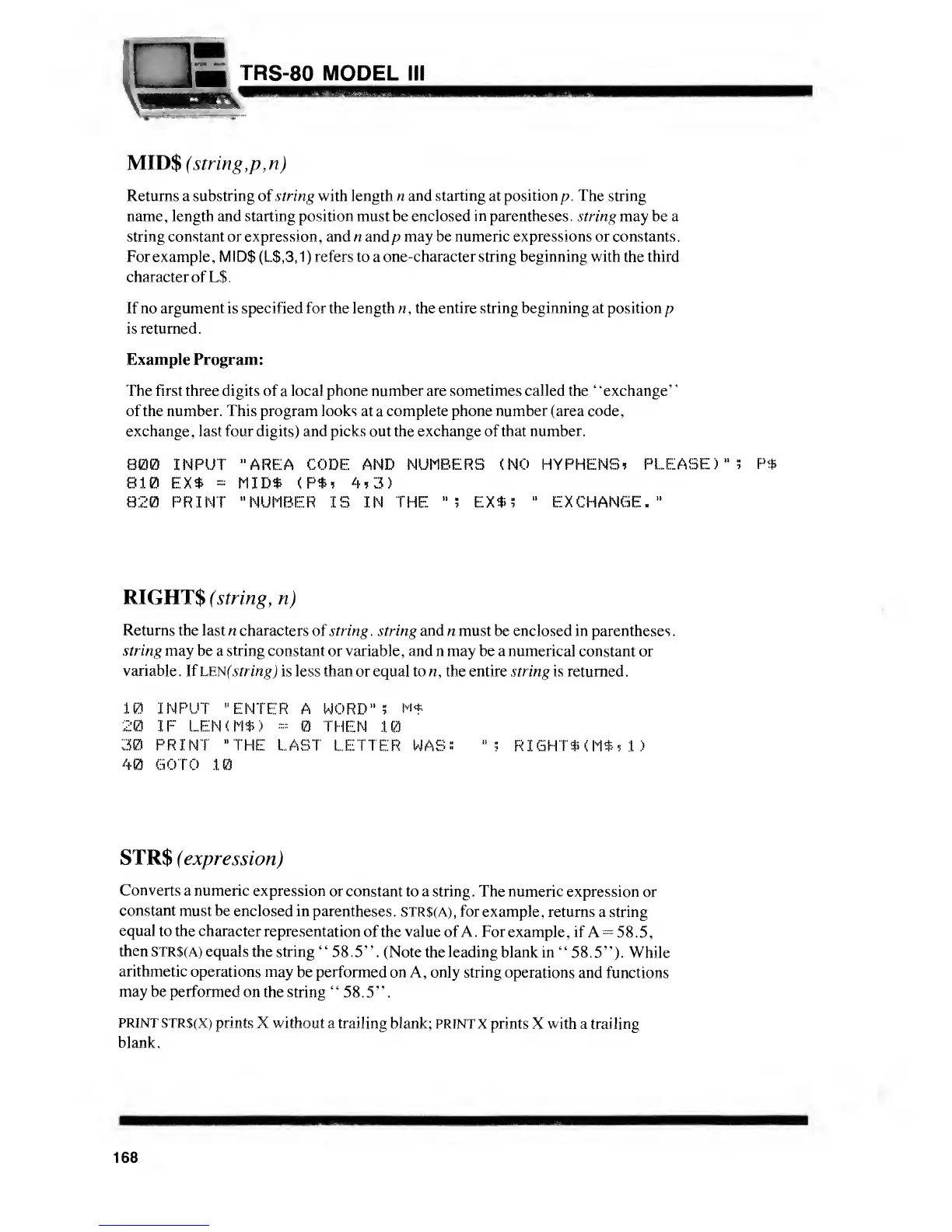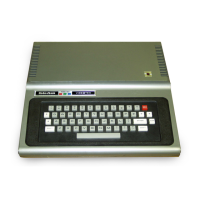TRS-80
MODEL III
MID$ (string,p,n)
Returns a substring of string with length n
and starting
at
position/?.
The string
name, length and starting position must be enclosed
in
parentheses, string may be a
string
constant
or expression, and
n andp
may be numeric expressions or constants
.
For example,
MID$
(L$,3,1) refers to a
one-character string beginning with
the
third
character of L$.
If no argument is specified for the length n
,
the
entire string beginning
at position
p
is returned.
Example Program:
The first three digits of
a
local phone number are
sometimes called
the "exchange'
'
of the number. This program looks at
a
complete phone
number
(area code,
exchange, last four digits) and picks out the exchange of that number.
800 INPUT "AREA CODE AND
NUMBERS (NO HYPHENS?
PLEASE)"; P*
810
EX*
=
MID* <P*»
4,3)
820 PRINT "NUMBER
IS IN
THE
"
?
EX*?
"
EXCHANGE."
RIGHTS
(string,
n)
Returns
the last n characters of string
.
string and
n
must
be
enclosed in
parentheses
.
string may
be a string constant
or
variable, and n may be a numerical
constant or
variable
.
If
LEH(string) is less than
or equal to n, the
entire string
is returned
.
10
INPUT
"ENTER
A WORD"?
M*
20 IE LEN<M*>
=
THEN
10
30 PRINT "THE LAST LETTER WASs
»
; RIGHT*(M*»1)
40 GOTO
10
STR$
(expression)
Converts a numeric
expression
or constant to a string. The numeric
expression
or
constant must
be enclosed in parentheses.
STR$(A), for example,
returns a string
equal to the
character representation
of the value of
A.
For
example , if
A
=
5 8 .
5
,
then
STR$(A) equals
the
string
"
58.5"
. (Note the
leading
blank in
"
58.5").
While
arithmetic
operations may
be performed on
A,
only string
operations
and functions
may be
performed on
the string
"58.5".
PRINTSTRS(X) prints
X without
a trailing blank; PRINTX prints
X with a trailing
blank.
168

